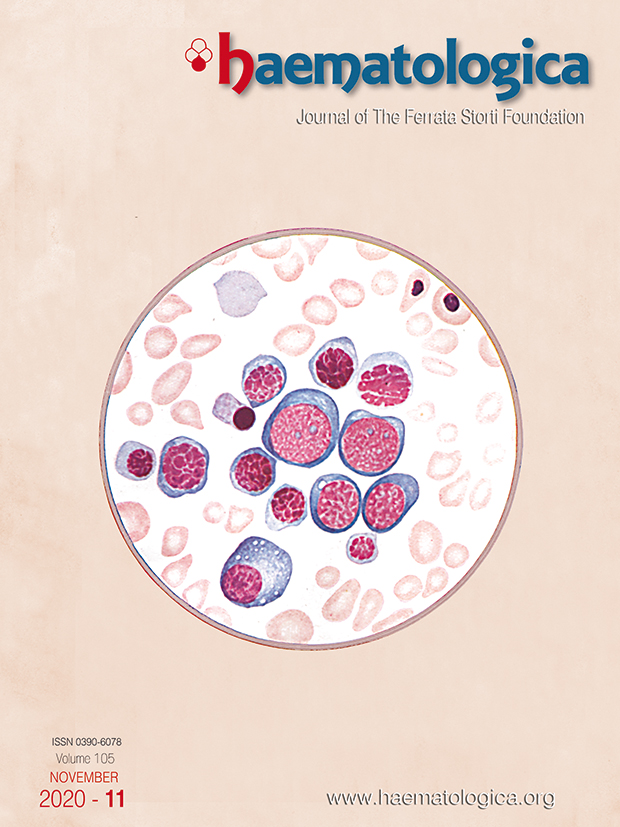For over 50 years from the description of the first patients in 1887,1 pernicious anemia has been one of the most mysterious and feared hematologic diseases. Patients almost always died after a long disease course characterized by a variable and complex clinical profile. A number of different treatment approaches, including drugs such as arsenic preparations, radiotherapy, and even splenectomy, had all proved unsuccessful. It was only in 1926 that a study by Minot and Murphy2 radically changed the prognosis of this disease. In a study of 45 pernicious anemia patients, Minot and Murphy reported that a diet rich in liver, muscle meat, eggs and milk had been able to cure all 45 of them. This discovery not only changed patients' prognosis, but also paved the way for a long series of research initiatives to define the etiopathogenesis of pernicious anemia which ultimately led (in 1948) to the identification and purification of vitamin B12.3,4
Figure 1.Bone marrow (BM) smear from a dog with an experimental infestation with bothriocephalus. Two of the three animals used in the experiment developed severe macrocytic anemia with an abundance of BM erythroblasts. This beautiful hand-drawn color plate depicts the BM characteristics of one of them.
But back in 1931, the etiology of pernicious anemia had still not been identified, although it was known that it frequently affected subjects with bothriocephalus infestation. Some authors suggested that there was a cause-and-effect relationship between these two conditions, but the observation that most patients with this infestation do not develop pernicious anemia convinced other clinicians that the association was purely coincidental. Edoardo Storti, then a 22-year old student of Adolfo Ferrata at the Department of Internal Medicine of the University Hospital of Pavia, who was later to become one of the most renowned Editors in Chief of Haematologica, tried to resolve this uncertainty with a very simple approach. He infected three dogs with the bothriocephalus parasite and monitored their clinical and hematologic status. After 4 months, two of the three animals developed severe organic wasting with marked macrocytic anemia. Storti concluded that bothriocephalus was responsible for their severe anemia, thus providing simple but convincing evidence in favor of the hypothesis that this tapeworm can cause pernicious anemia. The cover of this issue of Haematologica comes from one of the color tables that illustrated the paper reporting these results published in the Journal in 1931.5
Footnotes
Correspondence
References
- Osler W, Gardner W. A case of progressive pernicious anemia (idiopathic of Addison). Canadian Medical and Surgical Journal. 1877; 5:385-404. Google Scholar
- Minot GR, Murphy WP. Treatment of pernicious anemia by a special diet. JAMA. 1926; 87:470-476. https://doi.org/10.1001/jama.1926.02680070016005PubMedGoogle Scholar
- Lester-Smith E. Purification of the anti-pernicious anaemia factor from liver. Nature. 1948; 161:638-639. https://doi.org/10.1038/161638a0PubMedGoogle Scholar
- Rickes EL, Brink NG, Koniusky R, Wood TR, Folkers K. Crystalline vitamin B12. Science. 1948; 107:396-397. https://doi.org/10.1126/science.107.2781.396PubMedGoogle Scholar
- Storti E. [Anemia sperimentale da Botriocefalo]. Haematologica. 1931; 12:237-261. Google Scholar
Data Supplements
Figures & Tables
Article Information

This work is licensed under a Creative Commons Attribution-NonCommercial 4.0 International License.

